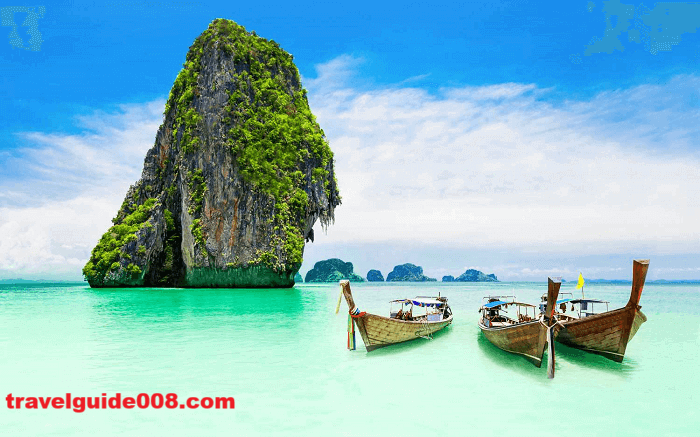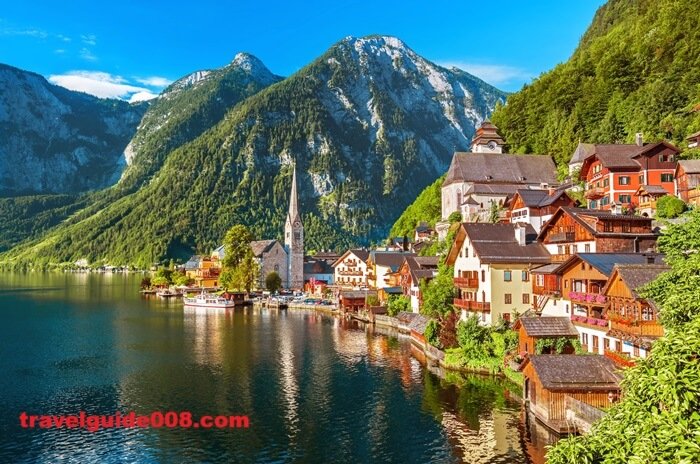How a Regular Travel Guide Addresses Tourists:
Travel guides become the perfect travel companions for travelers, giving them vital information to make traveling more enjoyable. Be it on paper or digitalized, the idea is to fulfill the tourist’s diverse needs in going to new places. The article tries, therefore, to list a few ways a common travel guide addresses tourists. These essentials include how a typical destination shines, helpful practical information, cultural insights, and many more.

Understanding the Needs of a Tourist:
1. Destination in-depth information:
The main function of a travel guide is to provide an in-depth overview of a destination. This would include geographical information, and historical context, and outline the cultural significance of a specific region. For instance, a travel guide for Rome would describe it as having a short history starting from its origins, how it became an important city in the Roman Empire, and all through history. This background equips travelers to digest what they are going to explore in the following lines of the travel guide.
2. Highlight Significant Places:(Travel Guide)
A travel guide usually comprises a list of attractions, which they present as necessarily visited; this section may include historical importance and what would be experienced in those places. Usually, famous landmarks such as the Colosseum, Eiffel Tower, or Great Wall of China top this section. Normally, descriptions provide information about:
Visitor Information: Opening hours, ticket prices, and access.
How to Visit: When to go, tour or cultural orientation should be seen
This targeted information helps tourists plan their itineraries.

Practical Information for Travelers:(Travel Guide)
3. Accommodation and Dining Options:
Travel guides usually provide various options for accommodation, ranging from luxury hotels to budgeted hostels. Each entry usually includes:
Type of Accommodation: Hotel, hostel, Airbnb, etc.
Price Range: Budget, mid-range, and luxury.
Location:
Access to attractions and public transport
Dining suggestions include eating recommendations as well: street food stalls, and “more upscale” restaurants might also indicate the places to eat like street food stalls to higher tier restaurants with descriptions including:
Types of Cuisine.
Special cuisines are local specialties that the visitor must try. The most delicious and popular dish; or something out of the ordinary.
Budget ranges More budget-friendly places for low-cost eats or some high-end restaurants for fine dining.
Cultural Eating Practices: Etiquette, local, traditional methods of dining on the road.
4. Transportation Knowledge:
Transportation is overwhelming for travelers, getting a sense of one’s at a new destination. A great travel guide should provide transportation information that will include information related to public transport and car rentals together with rideshare, walking, and biking.
These instill a traveler with the confidence to wander their destination with courage.

Cultural Setting and Sensitivity:(Travel Guide)
5. Cultural Manners and Expectations:
The sensitivity of culture is pertinent for the traveler who wishes to meaningfully participate in the life of the locals. Travel guides often have sections on cultural etiquette that go on to give knowledge about:
Local Customs: Greetings, gift-giving customs, and social expectations.
Taboos: Those things considered inappropriate or offensive.
Language Tricks: A little familiarity with the local language can add a lot to your relationships.
Educating them on these aspects creates a respectful interaction with local cultures.
6. Festivals and Events:
A well-rounded travel guide also mentions the local festivals, events, and practices which occur around the year. This may include:
Annual Events:
These mainly consist of the dates the event occurs, its significance, and what visitors should expect. It will be about the cultural performances: a fact file on local music, dance, and art forms that take place during visits.
Knowledge of the local events will enable them to appreciate the culture of the destination more profoundly.
Safety and Health Considerations:
The safety of the tourists is one of the first things a travel guide should concern itself with. Most of this section contains:
General Safety Advice: Scams to watch out for, places to steer clear of, and how to stay safe when traveling.
Emergency Contacts:
These are local emergency numbers, such as the local police and hospitals, as well as the location of your country’s embassy.
Travel Insurance: The necessity of insurance and what to consider while buying a cover.
This is comforting information for the traveler who is enabled to make choices.
8. Health Advice:
Health is also a matter of concern. For any travel guide, the following are most commonly taken into account:
Vaccination: Vaccines required by the traveler for visiting that place.
Local Health Disorders: Guidelines on normal diseases afflicting the nation and how they can be avoided.
Safe Food and Drinking Water: Health practices to be followed so that the tourist may eat and drink safely.
These tips guide travelers on keeping their health at their best while on tour. This generally leads to a better experience during the trip.
Environmental Consciousness and Responsible Touring:
9. Responsible Stewardship Practices:
As more people become environmentally conscious, most travel guides today have sections on responsible stewardship practices that ensure sustainable travel. For example, this may include:
Responsible Tourism: This will guide the visitor on how to reduce their impact as they explore.
Wildlife Conservation: At times, it guides the tourist on what to do and what not to do regarding wildlife.
Local Economies Support: This encourages the visitor to shop locally and support local services.
Through promoting green-friendly tourism, travel guides help conserve destinations for future visitors.

10. Sample Itineraries
Recommended for those who are not sure which would be good activities to do, there are sample itineraries according to various types of interests. Whether someone is very interested in history, food, adventure, or relaxation, a good guide will provide them:
Day-by-Day Plans: Activities and time allocations.
Flexible Options: Recommendations that cater to different travel styles and time constraints.
Some of these are recommendations that may appear as valuable inspiration for the traveler in designing his adventure.
11. Local Insights and Personal Stories:
Many of these contemporary travel guides feature anecdotal stories or local knowledge on the part of the authors or residents. This element of storytelling gives tourists a human connection to the destination. Personal anecdotes make the guide exciting and timely, often making the tourist look through other attractions that have not appeared before.